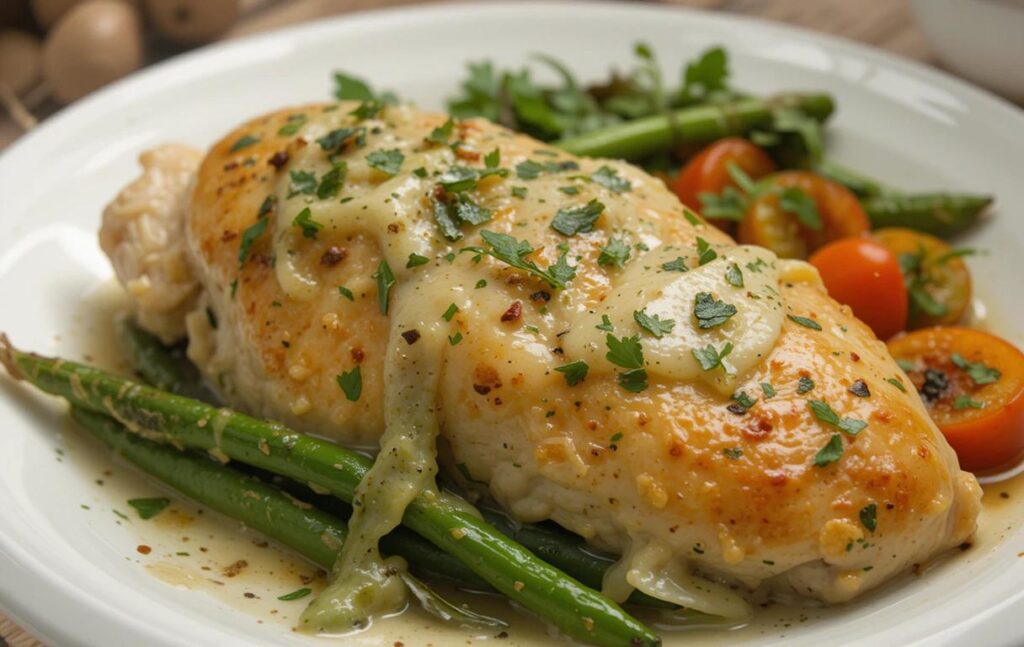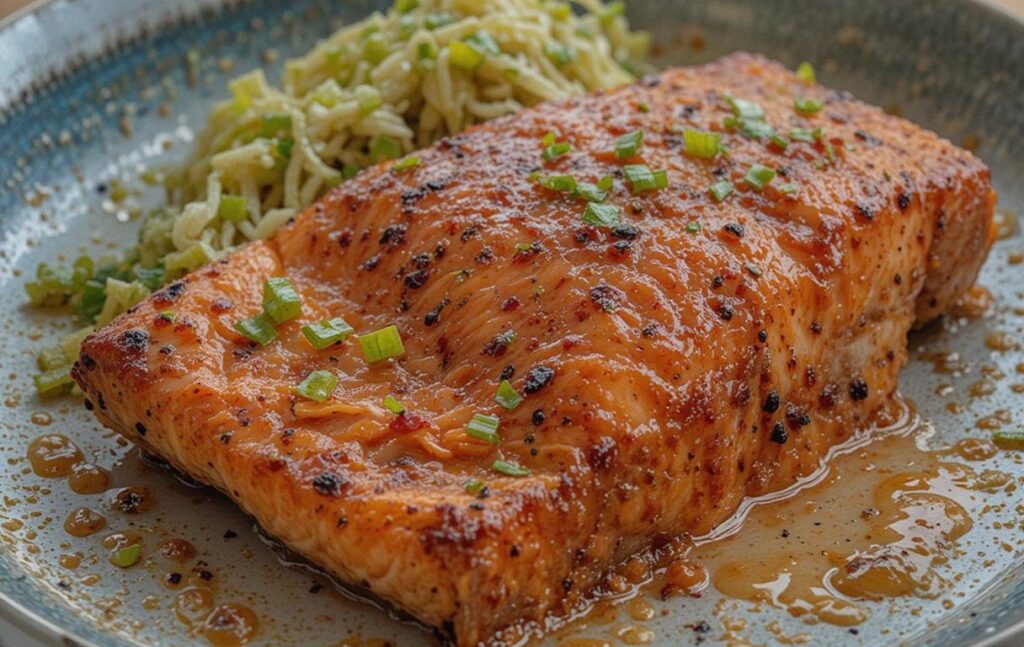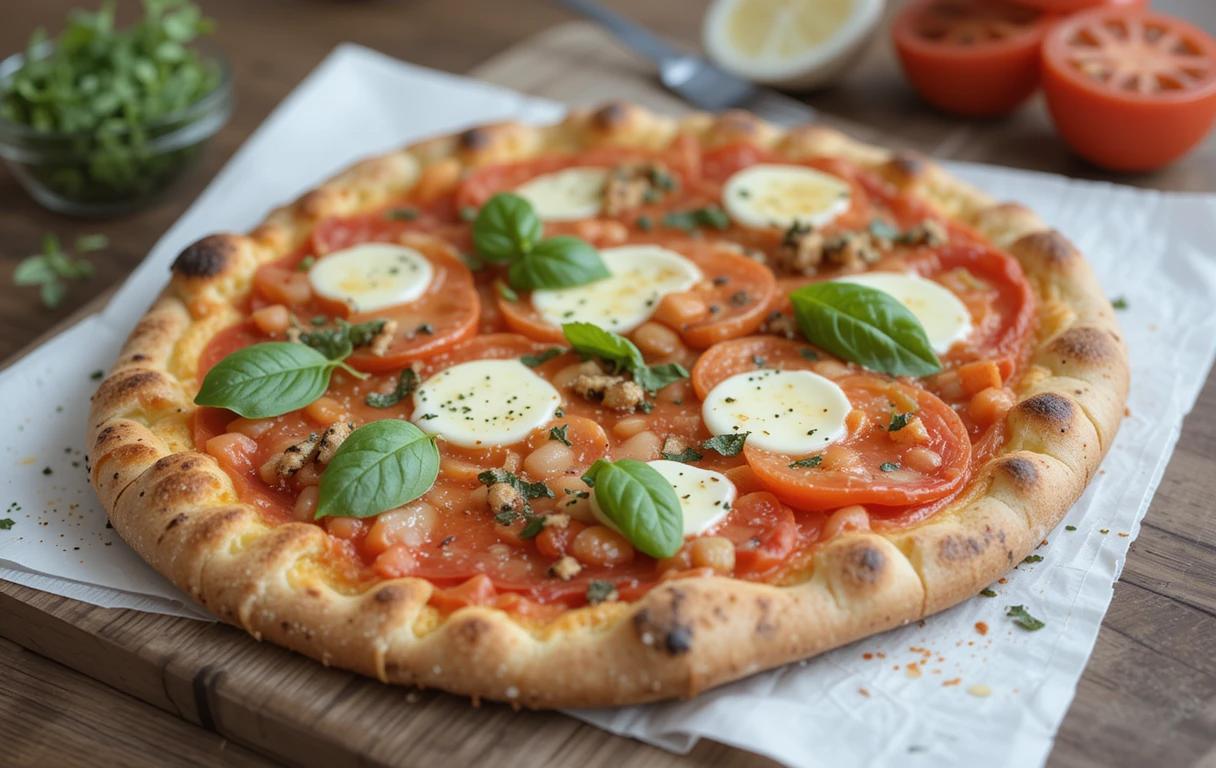Introduction to Rising Recipes
Food has always been a cornerstone of culture, bringing people together and sparking innovation in kitchens worldwide. As global tastes evolve, so too do culinary trends. Enter rising recipes—a term that captures the emergence of creative, contemporary dishes gaining popularity among food enthusiasts, social media influencers, and home cooks alike.
Rising recipes often represent a fusion of traditional flavors and modern techniques, catering to changing lifestyles, dietary preferences, and adventurous palates. These dishes typically reflect:
- Cultural Fusion: The blending of ingredients and cooking methods from different culinary traditions.
- Health-conscious Choices: Emphasizing plant-based ingredients, whole foods, and balanced nutrition.
- Sustainability: Featuring locally-sourced, seasonal, and eco-friendly components.
- Visual Appeal: Designed for the Instagram age, these recipes are as pleasing to the eyes as they are to the palate.
With the advent of platforms like TikTok and YouTube, recipes can now trend overnight, turning obscure dishes into household staples. Viral recipes like whipped coffee, cloud bread, and baked feta pasta have shown the power of online communities in shaping global food trends.
The rise of these recipes is not just about flavor but also about storytelling, connection, and exploration. They represent a collective culinary adventure, encouraging both professional chefs and home cooks to experiment, innovate, and redefine the art of cooking.
This journey into rising recipes invites you to discover the flavors and techniques shaping the kitchens of tomorrow. Ready to explore? Let’s cook!
Overview of Rising Recipes and Their Popularity
In the evolving world of gastronomy, rising recipes have become a symbol of culinary innovation and cultural adaptation. These recipes are not just new dishes but a movement that reflects the ever-changing preferences and priorities of modern cooks and eaters. From viral food trends to the reinvention of classic recipes, rising recipes capture the essence of what’s fresh, exciting, and relevant in the culinary landscape.
Popularity of Rising Recipes
- Social Media Influence: Platforms like Instagram, TikTok, and Pinterest have transformed how recipes are discovered and shared. Viral trends like dalgona coffee, pasta chips, and butter boards have catapulted home chefs into the limelight and made these recipes accessible to millions.
- Cultural Exchange: The internet has blurred geographical boundaries, allowing food enthusiasts to explore and recreate international cuisines. Rising recipes often blend global flavors, making them appealing to diverse audiences.
- Adventurous Palates: As more people travel and experiment with food, there’s a growing interest in trying novel combinations, textures, and techniques.
- Health and Wellness Trends: Many rising recipes align with modern dietary needs, emphasizing plant-based options, low-carb alternatives, and superfood ingredients.
Importance in Modern Cooking
- Culinary Innovation: Rising recipes challenge conventional norms and push the boundaries of traditional cooking techniques. They inspire creativity and encourage chefs to think outside the box.
- Accessibility and Inclusivity: With step-by-step videos and simplified methods, these recipes make gourmet dishes approachable for home cooks, regardless of skill level.
- Adapting to Lifestyles: Modern cooking is often about convenience and adaptability. Rising recipes frequently offer quick preparation times or meal-prep options that cater to busy lifestyles.
- Sustainability and Responsibility: Many modern recipes highlight the importance of using seasonal, local, and eco-friendly ingredients, reflecting the growing concern for the planet’s health.
- Cultural Preservation and Innovation: While some recipes honor age-old traditions, others reimagine them, keeping culinary heritage alive while adapting it to contemporary tastes.
What Defines a Rising Recipe?
A rising recipe is not just a dish but a culinary phenomenon that captures attention, spreads rapidly, and resonates with contemporary tastes. These recipes stand out for their uniqueness, adaptability, and broad appeal, often serving as a mirror of cultural trends and technological influences in the food world.
Characteristics of Trending Recipes

- Simplicity and Accessibility
- Trending recipes often rely on easily available ingredients and straightforward methods, making them approachable for a wide audience, including novice cooks.
- Examples include dishes like three-ingredient desserts or one-pan meals.
- Visual Appeal
- A hallmark of rising recipes is their aesthetic quality, designed to be “camera-ready” for social media. Vibrant colors, creative plating, and unique textures are key.
- Think of the bright hues of smoothie bowls or the layered beauty of dalgona coffee.
- Innovative Techniques and Flavors
- These recipes often blend traditional techniques with new ideas, creating a fresh twist. They might introduce unusual combinations of ingredients or reimagine familiar dishes.
- Examples include fusion recipes like sushi tacos or unexpected pairings like chocolate and chili.
- Customization and Versatility
- Trending recipes often allow for personalization, accommodating dietary preferences, cultural flavors, or ingredient substitutions.
- For instance, a viral pasta recipe may have gluten-free, vegan, or high-protein adaptations.
- Timeliness
- Many rising recipes are seasonal or tied to current events, such as themed dishes for holidays or celebrations.
The Influence of Social Media
Social media is a driving force behind the popularity of rising recipes. Platforms like TikTok, Instagram, and YouTube amplify their reach, making it easier than ever for recipes to go viral.
- Short Video Tutorials
- Bite-sized, visually engaging tutorials make recipes easy to understand and replicate.
- For example, the baked feta pasta trend exploded on TikTok, inspiring millions of recreations.
- Hashtags and Challenges
- Recipe hashtags and viral challenges encourage community participation, creating a sense of shared culinary excitement.
- Examples include #PancakeCereal or #CloudBread.
- Social Validation
- Seeing others share successful recreations builds trust in a recipe’s appeal and effectiveness, further fueling its popularity.
Creative Combinations
- Fusion Dishes
- Rising recipes often combine elements from different cuisines, introducing new flavor profiles.
- Examples: Korean BBQ pizza or Mexican-Japanese sushi burritos.
- Reinvented Classics
- Old favorites are given a modern twist, such as transforming traditional lasagna into lasagna soup or turning cheesecake into bite-sized pops.
- Unconventional Ingredients
- Using surprising or trending ingredients like matcha, activated charcoal, or aquafaba creates intrigue and novelty.
- Layering Textures and Flavors
- Recipes often emphasize a combination of crunchy, creamy, and spicy elements to create a memorable sensory experience.
Global Cuisine Trends
Food transcends borders, and in today’s interconnected world, global cuisine trends are a celebration of diversity and creativity. Popular recipes from different cultures are not only gaining recognition but also influencing modern culinary tastes by merging traditional elements with contemporary innovations. These trends reflect an increasing curiosity about flavors, techniques, and ingredients from around the world.
How Global Recipes Influence Modern Tastes

- Fusion Cuisine
- Combining elements of different culinary traditions creates new, exciting dishes. For instance, kimchi tacos or sushi burgers are a direct result of cross-cultural experimentation.
- Ingredient Accessibility
- Increased availability of global ingredients like miso, tahini, or harissa allows home cooks to explore recipes from different cultures.
- Health-Conscious Adaptations
- Many global cuisines naturally align with modern health trends. For example, Mediterranean diets highlight olive oil and fresh vegetables, while Japanese cooking emphasizes clean, umami-rich flavors.
- Viral Trends
- Social media amplifies the reach of global recipes, making dishes like dalgona coffee, birria tacos, and mochi ice cream global sensations.
- Cultural Exploration
- Cooking global recipes provides a window into the history, traditions, and values of other cultures, encouraging appreciation and respect for diversity.
Easy-to-Make Rising Recipes at Home
Rising recipes don’t have to be complicated. Many trending dishes can be recreated at home with simple ingredients and beginner-friendly techniques. Below are some easy-to-make recipes inspired by popular culinary trends, perfect for those looking to explore exciting flavors without feeling overwhelmed.
1. Whipped Coffee (Dalgona Coffee)
- Why It’s Trending: Viral on TikTok for its creamy texture and visual appeal.
- Ingredients: Instant coffee, sugar, hot water, milk (dairy or plant-based).
- Instructions:
- Whisk 2 tbsp of instant coffee, 2 tbsp sugar, and 2 tbsp hot water until fluffy.
- Spoon the mixture over a glass of milk and stir to combine.
2. Baked Feta Pasta
- Why It’s Trending: Minimal prep and bursting with flavor.
- Ingredients: Feta cheese, cherry tomatoes, garlic, olive oil, pasta, and basil.
- Instructions:
- Place feta and cherry tomatoes in a baking dish, drizzle with olive oil, and bake at 400°F for 25 minutes.
- Mix with cooked pasta and fresh basil for a creamy, tangy dish.
3. Avocado Toast
- Why It’s Trending: Customizable and healthy.
- Ingredients: Bread, avocado, lemon juice, salt, and toppings like chili flakes or poached eggs.
- Instructions:
- Mash an avocado with lemon juice and salt.
- Spread over toasted bread and add your favorite toppings.
4. Rice Paper Dumplings
- Why It’s Trending: Gluten-free and versatile.
- Ingredients: Rice paper, cooked vegetables, and protein of choice.
- Instructions:
- Soften rice paper in water, fill with cooked ingredients, and fold like a dumpling.
- Pan-fry until crispy.
5. Chia Pudding
- Why It’s Trending: A superfood dessert or breakfast option.
- Ingredients: Chia seeds, milk (dairy or plant-based), and sweeteners like honey or maple syrup.
- Instructions:
- Mix 3 tbsp chia seeds with 1 cup milk and sweetener.
- Refrigerate overnight and serve with fruits or nuts.
6. Cloud Bread
- Why It’s Trending: Light, fluffy, and fun to make.
- Ingredients: Egg whites, sugar, and cornstarch.
- Instructions:
- Whisk egg whites with sugar and cornstarch until stiff peaks form.
- Bake at 300°F for 25 minutes to achieve a soft, cloud-like texture.
Challenges in Following Rising Recipes
While rising recipes can be fun and inspiring, there are common hurdles that many people encounter, especially when attempting trending dishes for the first time.
1. Sourcing Ingredients
- Problem: Trending recipes often include unique or region-specific ingredients that are not always available in local stores.
- Example: Finding ingredients like gochujang (Korean chili paste), pandan, or yuzu can be difficult in certain areas.
- Solution:
- Look for substitutions (e.g., using lime instead of yuzu).
- Shop online for specialty ingredients.
2. Mastering Techniques
- Problem: Viral recipes sometimes require advanced skills, like whipping meringue to stiff peaks or folding dumpling wrappers.
- Example: Cloud bread or soufflé pancakes can be tricky for beginners due to their delicate preparation.
- Solution:
- Watch step-by-step video tutorials.
- Practice simpler techniques first, such as whisking egg whites or folding basic ingredients.
3. Misleading Expectations from Social Media
- Problem: Recipes often look perfect in videos but can turn out differently at home.
- Example: Achieving the same look or texture as seen in an Instagram reel might be challenging.
- Solution:
- Focus on flavor rather than perfection.
- Learn from trial and error instead of expecting perfect results on the first try.
4. Time Management
- Problem: Some recipes, while marketed as “quick,” can be time-consuming due to prep or clean-up.
- Example: Making sushi rolls at home can involve extensive prep for ingredients like rice and fillings.
- Solution:
- Read the recipe in full before starting to understand the time required.
- Prep ingredients in advance.
5. Equipment Limitations
- Problem: Certain recipes require specialized tools, like a stand mixer or a sous vide machine.
- Example: Making whipped coffee without an electric whisk can be tedious.
- Solution:
- Use alternative methods (e.g., a mason jar for shaking whipped coffee).
- Adapt recipes for the tools you have.
Sustainability in Trending Recipes
As global concerns about climate change and environmental impact grow, sustainability is becoming a cornerstone of modern cooking. Trending recipes are increasingly incorporating eco-friendly practices, emphasizing responsible ingredient choices, waste reduction, and ethical sourcing. This shift reflects a broader movement toward mindful eating, where what we cook and how we cook it align with the values of environmental stewardship.
Eco-Friendly Practices in Trending Recipes

1. Plant-Based Ingredients
- Why It Matters: Reducing reliance on animal products significantly lowers carbon emissions and conserves resources like water and land.
- Examples in Recipes:
- Vegan versions of popular dishes, such as jackfruit pulled “pork” tacos or chickpea “tuna” salad.
- Dairy alternatives like cashew cream, oat milk, and coconut yogurt.
- Impact: Plant-based trends encourage a more sustainable food system by decreasing the demand for livestock farming.
2. Seasonal and Local Produce
- Why It Matters: Using seasonal and locally-sourced ingredients reduces the carbon footprint associated with transportation and storage.
- Examples in Recipes:
- Summer salads with heirloom tomatoes and fresh basil.
- Winter soups featuring root vegetables like carrots and parsnips.
- Impact: Encourages support for local farmers and reduces reliance on imported goods.
3. Zero-Waste Cooking
- Why It Matters: Food waste contributes to greenhouse gas emissions. Utilizing every part of an ingredient minimizes this waste.
- Examples in Recipes:
- Vegetable scraps turned into broth or pesto made from carrot tops.
- Using stale bread for croutons or bread pudding.
- Impact: Reinforces the idea that leftover or imperfect ingredients still hold culinary value.
4. Alternative Proteins
- Why It Matters: Traditional livestock farming is resource-intensive. Alternative proteins offer a more sustainable option.
- Examples in Recipes:
- Lentil and mushroom “meatballs.”
- Dishes featuring tofu, tempeh, or insect protein (e.g., cricket powder in energy bars).
- Impact: Provides diverse, eco-friendly protein sources while catering to adventurous eaters.
5. Sustainable Seafood
- Why It Matters: Overfishing threatens marine ecosystems, so choosing sustainable options helps preserve ocean health.
- Examples in Recipes:
- Dishes using certified sustainable fish like pole-caught tuna or farmed trout.
- Vegan “fish” recipes using jackfruit or banana blossoms.
- Impact: Encourages consumers to consider the environmental impact of their seafood choices.
6. Minimal Packaging and Eco-Friendly Sourcing
- Why It Matters: Packaging waste, especially plastic, is a significant environmental issue. Sourcing from bulk bins or zero-waste stores reduces packaging.
- Examples in Recipes:
- Recipes emphasizing unpackaged produce and dry goods purchased in reusable containers.
- Homemade staples like nut butters or sauces to avoid prepackaged versions.
- Impact: Reduces reliance on single-use plastics and promotes mindful shopping habits.
Techniques and Tools Supporting Sustainability
1. Energy-Efficient Cooking Methods
- Examples:
- Instant Pots and pressure cookers for faster cooking times.
- Solar ovens and induction cooktops that conserve energy.
- Impact: Reduces energy consumption during meal preparation.
2. Composting
- Practice: Turning kitchen scraps into compost instead of discarding them.
- Examples: Recipes encourage saving peels, cores, and stems for compost bins.
- Impact: Converts food waste into valuable nutrients for soil, closing the waste loop.
3. Repurposing Leftovers
- Examples in Recipes:
- Leftover rice turned into fried rice or rice pudding.
- Roasted vegetable remnants blended into creamy soups.
- Impact: Reduces food waste and encourages creativity in the kitchen.
The Role of Social Media in Promoting Sustainability
Viral Campaigns and Challenges
- Social media platforms amplify the reach of sustainable recipes, encouraging participation through hashtags like #ZeroWasteCooking or #MeatlessMonday.
Educational Content
- Influencers and chefs share tips on sustainable shopping, ingredient swaps, and zero-waste cooking, making eco-friendly practices accessible to a larger audience.
Community Engagement
- Online communities celebrate sustainable cooking as a collective effort, sharing successes and inspiring others to adopt green habits.
Fusion Cuisine and Its Popularity
Fusion cuisine represents the blending of flavors, techniques, and traditions from different culinary cultures. This style of cooking celebrates innovation, creating dishes that resonate with diverse palates and modern lifestyles.
Why Fusion Cuisine is Popular
- Cultural Exchange: Fusion cuisine reflects the interconnected world, where culinary boundaries are increasingly blurred.
- Example: Sushi burritos blend Japanese and Mexican elements.
- Creative Freedom: Chefs and home cooks alike enjoy the flexibility to experiment with unique combinations.
- Example: Korean BBQ pizza or tacos with Thai-inspired fillings.
- Globalization of Ingredients: Greater access to international ingredients encourages the creation of fusion dishes.
- Example: The use of gochujang (Korean chili paste) in Italian pasta dishes.
- Appeal to Modern Palates: Fusion cuisine often balances bold flavors, diverse textures, and aesthetic appeal, making it a favorite for social media-worthy recipes.
The Science Behind Recipe Trends
Recipe trends don’t just happen; they are deeply influenced by psychology, culture, and technology.
Psychological Drivers
- Novelty and Curiosity: Humans are naturally drawn to new and exciting experiences. Recipes that showcase unique ingredients or unexpected techniques grab attention.
- Example: Cloud bread and its ethereal appearance.
- Social Proof: Seeing others successfully recreate a dish increases its perceived reliability and appeal.
- Example: Viral TikTok videos of baked feta pasta inspire confidence to try it.
- Visual Appeal: Vibrant colors and striking presentation make recipes memorable and shareable.
- Example: Rainbow bagels or galaxy-themed desserts.
Cultural Influences
- Collective Trends: Cultural movements, like the rise of plant-based diets or interest in global cuisines, shape recipe trends.
- Example: The popularity of jackfruit as a meat alternative in vegan dishes.
- Events and Seasons: Recipes tied to holidays, seasons, or significant events often gain traction.
- Example: Pumpkin spice everything in fall.
- Technology and Accessibility: Platforms like Instagram, Pinterest, and TikTok make it easier for recipes to go viral by leveraging short videos and engaging visuals.
FAQs About Rising Recipes
1. How do I find trending recipes?
- Follow food bloggers, chefs, and social media platforms like TikTok, Instagram, or YouTube.
- Use hashtags like #TrendingRecipes or #Foodie to explore viral ideas.
2. Are rising recipes easy to cook at home?
- Many trending recipes are designed to be simple and accessible. Look for beginner-friendly options like chia pudding or whipped coffee.
3. What if I can’t find a specific ingredient?
- Substitute with similar ingredients. For example, replace gochujang with a mix of sriracha and miso paste.
4. Are trending recipes always healthy?
- Not necessarily. Some trends focus on indulgence (e.g., deep-fried snacks), while others emphasize wellness (e.g., smoothie bowls). Adapt recipes to meet your health goals.
5. Can I modify a rising recipe?
- Absolutely! Most recipes are flexible. Adjust flavors, ingredients, or techniques to suit your preferences or dietary needs.
Slow Cooker Italian Sausage Soup
Conclusion
Rising recipes are a testament to the creativity and diversity of modern cooking. From fusion cuisine to viral trends, they inspire people to explore, experiment, and enjoy the art of food. These dishes often reflect deeper cultural, psychological, and environmental influences, making them more than just meals—they’re experiences.
As you embark on your culinary journey, remember: cooking is about creativity and personal expression. Whether you’re recreating a trending dish or inventing your own fusion masterpiece, the kitchen is your playground. So, dive in, try something new, and share the joy of food with the world.
For More Recipes
a pretty life in the suburbs marshmallow vanilla buttercream
mississippi mud pie ice cream
boston cream pie near me
vegan barley soup

